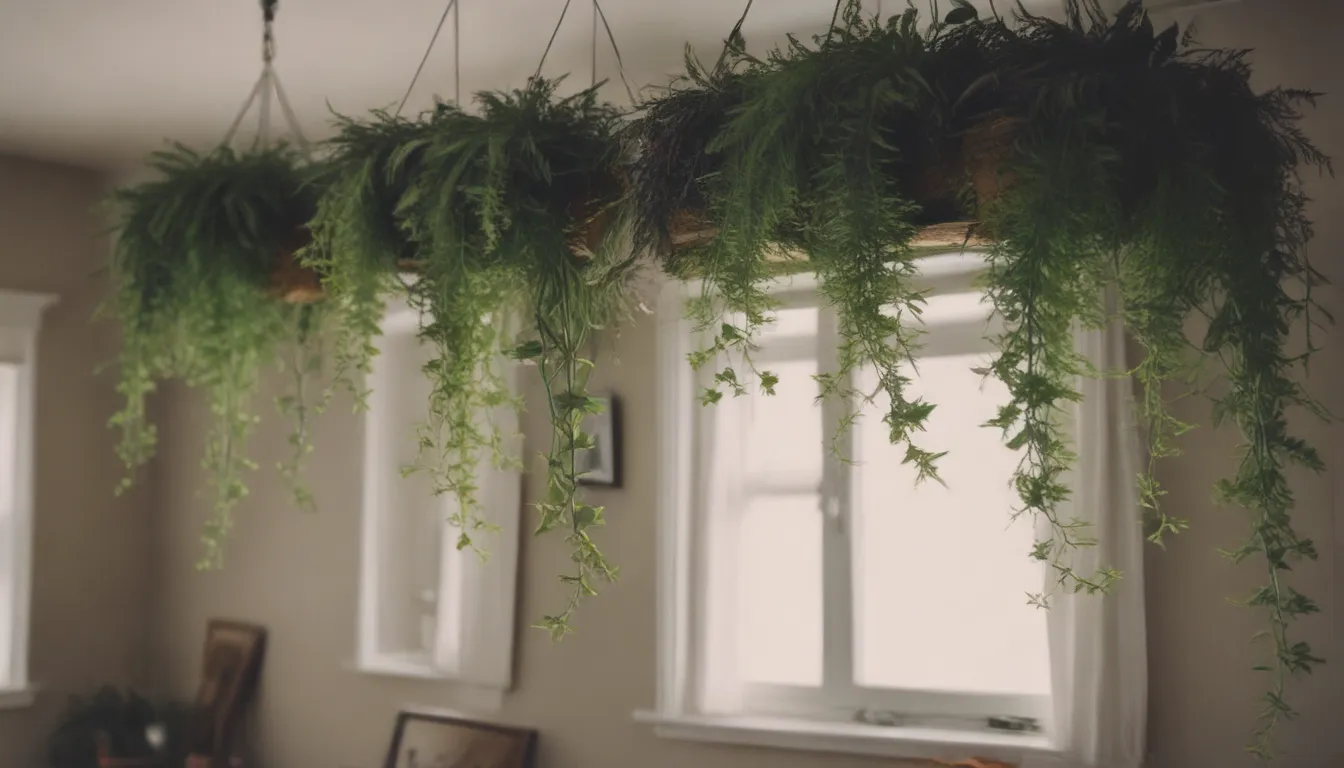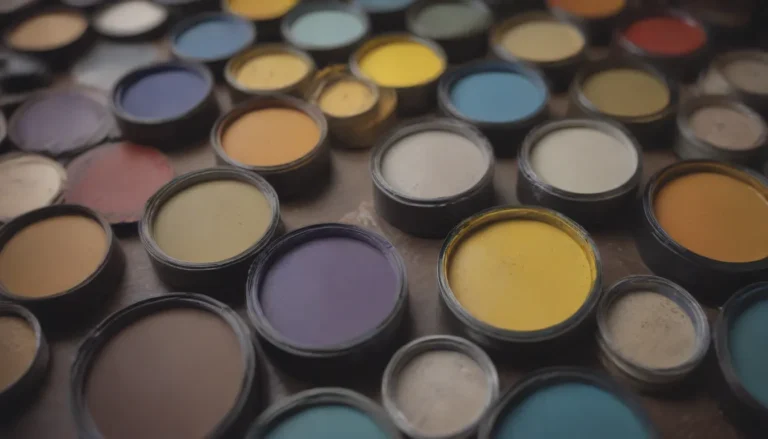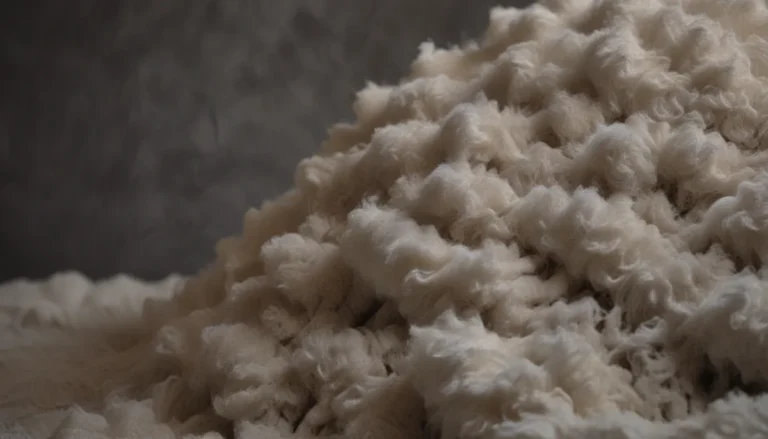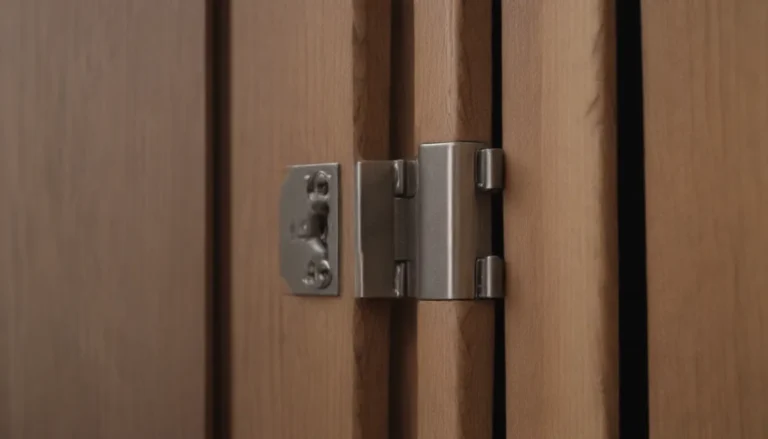How to Hang Plants From the Ceiling Without Holes: A Comprehensive Guide

Plants are an essential addition to any home, bringing life and vibrancy to your space. Hanging plants from the ceiling can be a great way to add greenery and create a cozy atmosphere. However, if you’re hesitant to drill holes in your ceiling or if you don’t have ceiling beams to hang your plants from, there are alternative methods you can use to achieve the same effect. In this guide, we’ll explore various ways to hang plants from the ceiling without holes, along with a list of lightweight plants that are perfect for this purpose.
Warning
Before we delve into the different methods of hanging plants from the ceiling, it’s essential to note some important safety considerations. Avoid hanging plants from light fixtures, lighting tracks, fire sprinklers, smoke alarms, or security cameras. Additionally, be cautious about hanging plants above-head or above fragile objects, as plants can fall when using non-invasive hanging methods.
Magnetic Plant Hooks
One innovative solution for hanging plants from the ceiling without damaging the surface is to use magnetic plant hooks. These hooks come in stainless steel, nickel, chrome, bronze, or black finishes to complement any plant, hanger, or home decor. The key to their effectiveness lies in the rare-earth, or neodymium, magnets they are equipped with, which have super-strong capacities of up to 100 pounds.
To ensure the magnet achieves its full weight capacity, it must be attached directly to a clean metal surface. While finding a suitable metal attachment point on the ceiling may be challenging, look out for metal plates, bolts, fasteners, or braces. Another option is to locate drywall screws embedded in the drywall and covered with paint. However, keep in mind that the weight capacity may be reduced when attached to screw heads, so proceed with caution.
Tension Rods
Metal tension rods offer a creative way to create the illusion of hanging plants from the ceiling without actually mounting them. These rods extend from wall to wall and can be positioned close to ceiling height, providing a sturdy support for your plants. They come with non-marring rubber tips to protect your walls and can be used to bridge wall gaps, skylight frames, or the ends of hallways.
Standard shower tension rods typically expand from 41 to 72 inches and have weight capacities ranging from 10 to 30 pounds. For larger spaces, extra-long tension rods designed for room divider curtains can extend up to 120 or even 160 inches. Remember to choose a tension rod that is longer than the intended span, with a general rule of the rod needing to be 2 inches longer than the span length.
Adhesive Utility Hooks
If you prefer a simple and non-invasive solution, adhesive utility hooks can be an excellent option for hanging plants from the ceiling without drilling. These hooks come with self-adhesive foam backings and can support items weighing up to about a pound. As long as the surface is smooth and clean, adhesive hooks can be positioned anywhere you desire, offering flexibility in placement.
Since most adhesive hooks are designed for walls, ensure that the hooks you select have a strong adhesive that can securely hold an item without slipping off when the hook is turned at a 90-degree angle.
Suction Cup Hooks
Suction cup hooks are a versatile and convenient way to hang plants from the ceiling, particularly on smooth, non-porous surfaces. They work well on surfaces like skylights, glass, or plastic, offering a weight capacity of about a pound. Some suction cup hooks advertise capacities of up to 10 pounds, making them suitable for slightly heavier plants.
Look for swivel-hook suction cups that can rotate to accommodate flat or angled ceilings, providing you with greater flexibility in hanging your plants without compromising on stability.
Bar Clamps
For a unique and visually appealing method of hanging plants close to the ceiling without drilling, consider using carpenter’s bar clamps. These clamps feature an adjustable jaw that slides along a metal rail, with lengths of up to 36 or even 48 inches. By attaching a bar clamp to the end wall and cantilevering it with a lightweight plant at its end, you can create a striking display that adds a touch of elegance to your space.
C-Clamps
If you have exposed ceiling beams in your home, C-clamps can be a reliable solution for hanging plants without the need for drilling. These clamps can grab onto both sides of the beam and support weights of up to 50 pounds when secured tightly. Be sure to choose the appropriate size of clamp based on the width of the beam and consider protecting the beam from damage by using clamp jaw pads or rubber squares.
Best Lightweight Plants for Hanging Without Drilling
When hanging plants without the support of solid, drilled attachment points, it’s essential to select lightweight plants that can be easily suspended. Along with using a lightweight plant hanger, opt for plants that don’t require soil and can thrive in hanging conditions. Here are some examples of best lightweight plants for hanging without drilling:
- Air Plants (Tillandsia)
- String of Pearls (Senecio rowleyanus)
- Spider Plant (Chlorophytum comosum)
- English Ivy (Hedera helix)
- Pothos (Epipremnum aureum)
In conclusion, hanging plants from the ceiling can be a delightful way to bring nature into your home. By utilizing innovative and non-invasive hanging methods, you can enjoy the beauty of indoor plants without the need for drilling holes. Whether you opt for magnetic plant hooks, tension rods, adhesive utility hooks, suction cup hooks, bar clamps, or C-clamps, there are plenty of creative solutions to suit your preferences and space requirements.
Remember to choose lightweight plants that are well-suited for hanging conditions and enjoy the greenery and freshness they bring to your living spaces. With these practical tips and suggestions, you can transform your home into a botanical haven that is both stylish and inviting.





